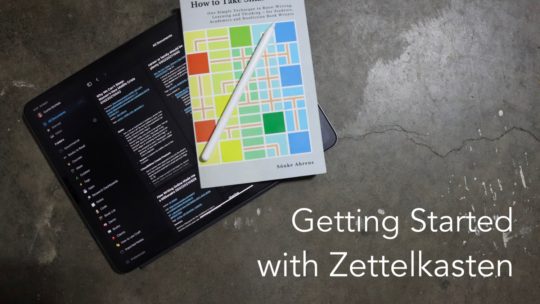Welcome to the PKM weekly newsletter. My goal is to round up good resources in the PKM space so you don’t have to.
This is the first issue, a test to see if all the work fits in my schedule. If you have interesting links you think should be listed, reach out to me on Twitter. In the coming weeks, I’ll have a full email newsletter set up so that you can sign up.
Software
Dendron is a new software for me and maybe just what heavy users of VSCode have been looking for. It’s a VSCode plugin that gives you similar functions to other note tools. It feels like it leans towards programmer leanings even more than Obsidian does, but if that’s you then this may be the tool you’re looking for.
logseq
If you’re looking to manage your tasks in logseq then contribute to this thread to help others build a good process.
For those that use Alfred here are some workflows to use with logseq and Alfred.
Forum user hkgnp has a walkthrough of their workflow with logseq, Todoist, Notion and Apple Notes.
Craft
TfTHacker has a great list of Craft tips which includes some extensions. Their tips also cover Readwise, Obsidian, and a few other topics.
Github user xvhang has a nice list of Craft resources.
If you’re looking for extensions for Craft then there is also Craftery by Alessio Ceti.
TfTHacker also released Version 3 of the Readwise extension for Craft.
On the API front, the Craft team has released API version 0.0.4 which includes support for inserting more block types into your content and editing more of the block types that could already be inserted.
Alexander Rink published an article about how he uses Craft and Hook to support his research by linking together a bunch of apps. Hook always seems very cool, but I do so much work on my iPad that I can’t rely on it to create links.
Obsidian
If you’re using Dataview, this solved request in the Obsidian forum reminds us that YAML needs to be at the top of your document.
This is an older forum thread, but if you’re looking to get started with the [[PARA]] method here is a started Obsidian database for you
For those transitioning from TheBrain to Obsidian, here is a video that may help you get a handle on the differences between the two software.
Nick Milo’s Obsidian Flight School just launched on Product Hunt if you’re looking for a guide to Obsidian.
Roam
Here is an interesting post about the speed of Roam Research at various tasks.
The general theme on Reddit about the Roam mobile apps is skeptical. There is also some annoyance that Roams pace has been pretty slow over the last two years.
Roam user coscorrodrift looks at annotating every video you watch on YouTube. He watched 110 videos over 18 hours. I watch more videos but I do at least an hour a day riding my bike for a daily workout (way too cold in Prince George for riding outside). Then I backtrack to any videos that needed a deeper dive.
Other
If you’re interested in how others read and process material this forum thread cover’s the workflow of many people. I talked about my workflow here.
I just came across Visa’s public Roam database. It’s been interesting to explore.
If you’ve been wondering about how to number your content there is an older, but great, forum thread on the Zettelakasten Forum talking about branching and numbering strategies.
Eric has a good post on the types of notes that you may have in your PKM system. The biggest thing I like about this is project notes. I don’t think we look at them enough. Much of the PKM community focuses on links and getting content into your system, and not enough on why you have these notes. What are they building to? How are you going to evaluate them?
Maggie wrote a good post comparing Roam and Obsidian for running a book club. The biggest knock against Obsidian seems to be that it’s not meant to handle individual user preferences on a shared vault. That same complaint extends to no sandboxing of notes from a user database and other similar faults for Obsidian if your use is a shared book club.
P.D. Workman has a great walkthrough for writing a book in Markdown and getting it into Vellum for publishing. They cover all the formatting issues you may have in this process. This is something I’ve been wondering about having written all my books in Scrivener previously.
If you’ve been wondering how the Zettelkasten Method can be used with fiction here is a good walkthrough of processing some fiction material.

Getting Started with Zettelkasten
If you’ve been wondering about what Zettelkasten is and how to start organizing your notes with this excellent system then this course is for you. I’ll cover the basics of choosing which tool to use, how to take notes, how to deal with linking your notes, and much more. You can also become a member to get all my courses.
$99 USD (30-day guarantee)